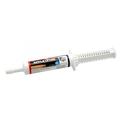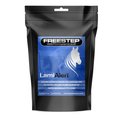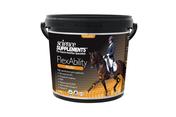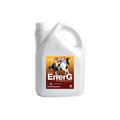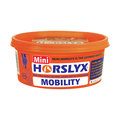With shows looking a likihood for July, you might want to start thinking abour your horse's fitness levels. Whether you like competing or just want to get out hacking for longer, ensuring your horse's fitness is what it should be means they are less likely to injure themselves. There are many fitness plans you can find online, in magazines or on the advice of others, but make sure you read our top tips before you start your horse’s regimen to get the most out of your training.
- Have a goal in mind; what level of fitness do you need from your horse? Are you planning to event at 3*? If not, then there's probably no need to follow your favourite top eventers' fitness plans. You may end up with a horse that is far too fit for you to handle!
- Tailor your plan to your horse, taking into account how fit he is currently, how fit he has been previously, whether he's had any time off or has been injured, as well as how old he is.
- Give your horse an MOT before you start, making sure you check tack, teeth, worming, feet and, if your horse has been injured, make sure you have the go ahead to start exercise from your vet.
- Remember that turnout can really help with keeping your horse’s base level fitness up. The more the better and if your turnout happens to be on a hill then that is even better!
- Make sure your horse’s diet is appropriate and get advice from a reputable horse feed company's helpline if you're not sure. It is important to only feed for the work done, not in anticipation of work level.
- Don’t forget your own fitness! Especially if you only have one horse to ride then spending some time on your own fitness is going to be essential in getting the best out of your riding.
- Write it down. Having a plan down on paper can help you stick to it.
- Be flexible with your plan, as you may find that your horse is not as fit as you thought and you need to slow down or take a step back. Personal commitments may also mean you can’t follow your plan exactly, so don’t worry, just adjust accordingly.
Some of our supported riders have given their tips:
El Sands, an avid dressage rider says “Make sure you spend enough time in walk before introducing any faster work. This will harden bones and tendons and build the strength the horse needs in order to avoid injury as workload increases. After a few months off I'd spend at least a month in walk!”
Izabela Motyl - show jumper and eventer, says "Choose your fitness plan depending on the horse you are working with. It is so easy to write up a plan but some horses won't like/tolerate certain things - not every horse tolerates long reining, for instance, and some will be too fresh to be lunged. Not every horse can be sat on straight away after a break or walk work to go hacking. Pessoa is not the only answer for every time of groundschooling - a lot of horses will work well in side reins, equiami etc. Think of new methods of working horses - treadmill or water treadmill - treadmill work is a safer option for fresh horses coming back into work, walking horses after an injury is never easy! Variety is important. Safety of both rider/handler and the horse is the most important thing."
If you have tips of your own, please share them with us by commenting below.
Written by: Verity



